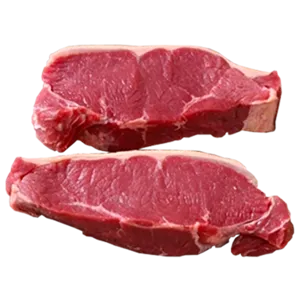Vitamin B2 is a water-soluble vitamin that plays a crucial role in the metabolism of fats, protein and carbohydrates which are converted into energy for the body and also a healthy nervous-system by sustaining Hormone production in the Adrenal Glands. Its continuously excreted in the urine of healthy individuals, making deficiency relatively common when dietary intake is insufficient.
• Vitamin B2 is an essential component of two (2) major coenzymes:
• Flavin mononucleotide (FMN),
• Flavin adenine dinucleotide (FAD)• These coenzymes play major roles in Energy production; cellular function, growth, and development; and Metabolism of fats, drugs, and Steroids.
• The conversion of the Amino Acids Tryptophan to Niacin (sometimes referred to as Vitamin B3) requires FAD (flavin adenine dinucleotide).
• Similarly, the conversion of Vitamin B6 to the coenzyme pyridoxal 5’-phosphate needs FMN (flavin mononucleotide).
• Riboflavin helps maintain normal levels of homocysteine, an Amino Acids in the blood.• More than 90% of dietary Riboflavin is in the form of FAD (flavin adenine dinucleotide) or FMN (flavin mononucleotide).
• The remaining 10% is comprised of the free form and Glycosides (or esters).• Most Riboflavin is absorbed in the proximal small intestine.
• The body absorbs little Riboflavin from single doses beyond 27mg and stores only small amounts of Riboflavin in The Liver, heart, and kidneys.
• When excess amounts are consumed, they are either not absorbed or the small amount that is absorbed is excreted in urine.
• Photosensitivity (sensitivity to light)
• Watery Eyes
• Itching or burning sensations in and around the Eyes
• Painful lips, mouth and Tongue
• Skin cuts (or cracks) in the Corners of the mouth
• Dry and peeling Skin (especially around the nose area)
• Unpleasant Skin problems
• Seborrheic dermatitis (Patches of itchy, scaly, slightly inflamed red Skin occurring on the scalp, around the nose, mouth, chin or chest)
• Sore throat and Tongue swelling
Note:
* Recommended Daily Intake:
• Infants (0-1 year): 0.4-0.5 mg
• Babies (1-3 years): 0.8 mg
• Children (4-10): 1.1-1.2 mg
• Males (11 and over): 1.7 mg
• Females (11 and over): 1.3 mg
• Pregnant women: 1.6 mg
• Breastfeeding women: 1.7-1.8 mg
* Vitamin B2 makes urine bright yellow as it’s water-soluble.
* Riboflavin is yellow and naturally Fluorescent when exposed to ultraviolet light. Moreover, ultraviolet and visible light can rapidly inactivate Riboflavin and its derivatives, thus the sensitivity, lengthy light therapy to treat Jaundice in newborns (or Skin disorders) can lead to Riboflavin deficiency.
* The risk of Riboflavin loss from exposure to light is the reason why Milk is not typically stored in glass containers.
* Bacteria in the large intestine produce free Riboflavin that can be absorbed by the large intestine in amounts that depend on the diet.
* More Riboflavin is produced after ingestion of Vegetable-based than meat-based foods.
Health Benefits of Vitamin B2











Energy
• Riboflavin plays a key role in the production of Energy (Energy Metabolism) by enabling the body to make better use of nutrients (such as fats, Proteins and Carbohydrates).
Foods & Energy



Immune System
• Riboflavin sustains the functions performed by all the other B-group Vitamins, thus beneficial to the immune system process.
Foods & Immune System







Musculoskeletal System
• Riboflavin is very essential for normal growth, cellular repair and quick Wound healing.
Foods & Musculoskeletal System





Skin Health
• It helps maintain Skin Health, promotes beautiful Skin (contributes to Skin Health), strong nails, good vision and can also help treat dermatitis or Eczema.
Foods & Skin Health




Foods Rich in Vitamin B2 (Riboflavin)
* The Order is from the Highest Level of Vitamin B2 [Riboflavin] Concentration.

1)
Pearl Millet

2)
Chlorella

3)
Spirulina

4)
Liver (Lamb)

5)
Liver (Beef)

6)
Parsley (Dried)

7)
Nori Seaweed

8)
Liver (Turkey)

9)
Liver (Chicken)

10)
Buttermilk

11)
Coriander

12)
Grapes

13)
Giblets (Turkey)

14)
Cheese (Gjetost)

15)
Tarragon

16)
Maple Syrups

17)
Paprika

18)
Basil (Dried)

19)
Goat Cheese

20)
Almond Nuts

21)
Heart (Turkey)

22)
Hijiki Seaweed

23)
Almond Butter

24)
Cayenne

25)
Cuttlefish

26)
Liver (Duck)

27)
Liver (Goose)

28)
Soybean

29)
Plain Yoghurt

30)
Milk

31)
Cremini Mushroom

32)
Spinach

33)
Tempeh

34)
Goat Milk

35)
Shiitake Mushroom

36)
Boiled Eggs

37)
Beef

38)
Cheese (Cheddar)




